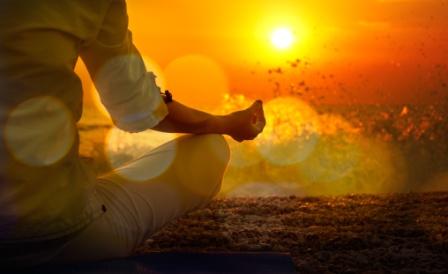Dharana – Meaning, Method, Classification, Benefits
By Dr Raghuram Y.S. MD (Ay) & Dr Manasa, B.A.M.S
Dharana is the sixth limb of Ashtanga Yoga, enlisted by master Patanjali. Dharana means concentration.
Read – Ashtanga Yoga – Eight Branches Of Yoga
Table of Contents
Meaning
Meaning and dimensions of Dharana
- The act of holding (holding to a point of focus and trying to concentrate hard on it, without allowing the mind to divert)
- Retaining (the mind at the point of focus while concentrating on it)
- Concentration, Single focus, Holding, Good memory
- Bearing, Wearing, Supporting, Certainty, Firmness
- The process of withdrawal of mind from the senses and its subsequent blending with the soul is called Dharana.
- Read – Yama – Meaning, Classification, Benefits
After realizing and remembering one’s goal, concentrating over it and blending with the soul is called dharana.
Maehle defines Dharana as – ‘The mind thinks about one object and avoids other thoughts; awareness of the object is still interrupted’.
Dharana is the first among the Antaranga Yogas i.e. interior Yogas. Concentration is possible after withdrawal of senses from its objects and inward focus of the senses i.e. pratyahara.
Read – Niyama – Types, Meaning, Classification, Benefits
After having gained control over the body through the practice of asanas, controlling the movement of vital forces of the body through pranayama and withdrawing of sense objects from sense organs by means of pratyahara, the practitioner reaches to stage of concentration i.e. Dharana.
In the state of Dharana, the mind is in a state of balance, concentrating keenly on the desired object. This is very much essential for atma jnana i.e. knowing self or self realization.
Read – Incorporating Atma Jnana (Self Awareness) In Treatment – Case Study

Method of Dharana
How is Dharana Practised?
After having withdrawn his senses from the sense objects and after diverting the focus of senses inwards, into the interior of the body, the practitioner concentrates on a pre-determined point of focus. It can be an object or a thought or specific region of the body like centre of the eyebrows, crown of the head, heart, and tip of the nose, navel or soul. The concentration can also be done by keeping the moon or a star as a point of focus.
Read – Health Benefits Of Yoga: Mind And Body

Then the practitioner tries to bind his mind with that point of focus with the aim of concentrating, without allowing the mind to divert.
Dharana is the first step of deep meditation with utmost concentration of mind. Here, the object being focused upon is held in the mind without the consciousness wavering from it.
Read – How To Do Pranayama – A Simple Pranayama Technique
Closed eye and open eye concentration
To practice dharana it is important to choose a calm and serene place. The practitioner should take a comfortable seated position. The eyes need to be closed, following the withdrawal of senses and the focus should be kept on a chakra or mantra. Dharana can also be practised by keeping the eyes open and focusing the vision and mind on the external object.
Read – Meditation By Watching Mind: Stages, Method, Benefits
To begin with, the practitioners can practice concentration for 10 minutes. Later with mastery over the concentration, the duration of practice shall be increased.
Regular practice of dharana helps in mastering the Yoga. Concentration is most needed for a yogi. It enhances the practice of yoga by enhancing the ability of the practitioner to remain focused. Concentration also trains the mind to remain calm and settled. It increases the strength of the mind without any doubt and also to gain control over the senses.
Read – Improper Use Of Sense Organs: A Neglected Cause For Diseases
Dharana as prerequisite for dhyana and samadhi
Dharana helps in achieving the next limb of Ashtanga Yoga i.e. Dhyana or meditation. A person cannot meditate without mastering concentration. Therefore, dharana becomes prerequisite for dhyana. In meditation, the consciousness of the act of meditation disappears. Only the consciousness of being and the object of concentration are registered in the mind.
Read – Do You Concentrate On Improving Concentration? 14 Easy Techniques
Mastering dhyana guides one to achieve the final stage of yoga i.e. Samadhi. Here, there is dissolution of the egoism of mind. The practitioner becomes one with the object on which he was concentrating and meditating. Generally, the object of concentration is God, or the Self. Concentration, meditation and oneness with self are progressive stages of concentration. Click to Consult Dr Raghuram Y.S. MD (Ayu) – Email / Skype
Research on Dharana
A study conducted with evaluation of autonomic and respiratory variables, eLORETA and sLORETA assessments of the EEG, evoked potentials, functional magnetic resonance imaging, cancellation task performance and emotional intelligence, revealed differences between dharana and dhyana, which would have been missed if the two stages of meditation had not been studied separately. (1)








